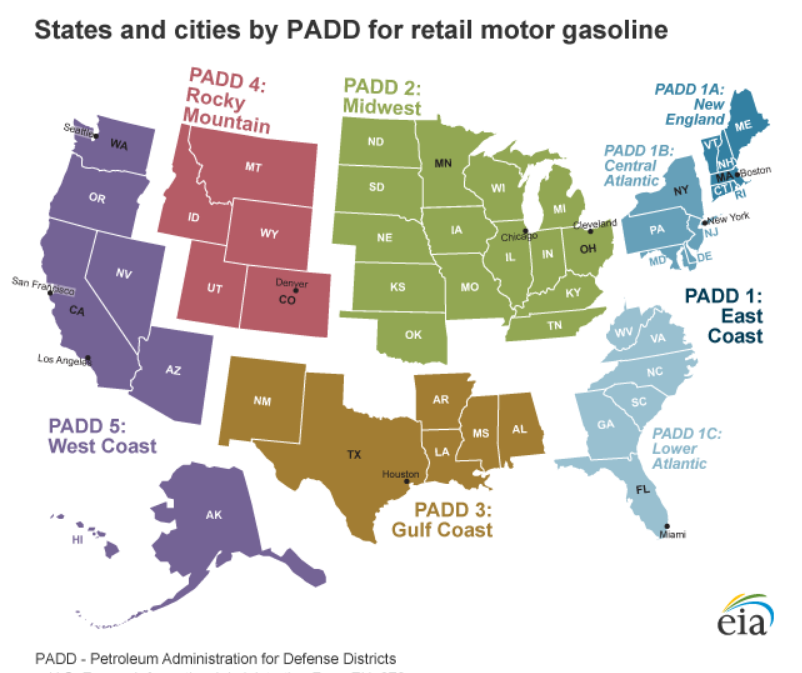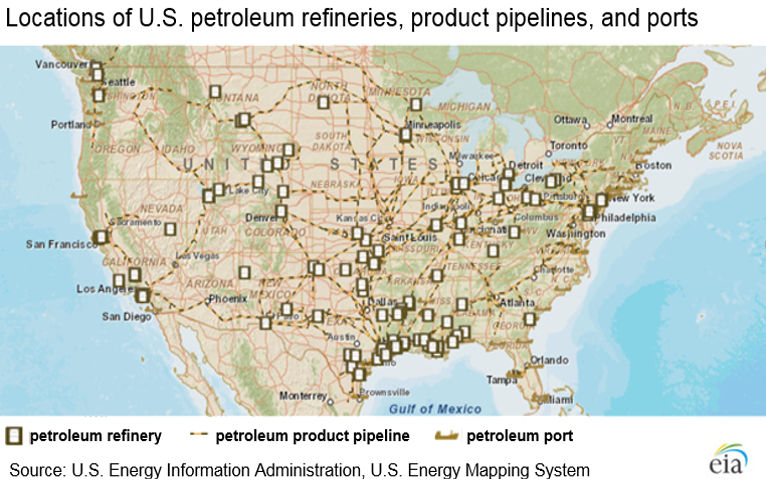Why are gasoline prices higher in some regions?
Gasoline prices vary over time and among states and regions. In addition to differences in state and local taxes, other factors contribute to regional differences in gasoline prices, including distance from supply, supply disruptions, and retail competition and operating costs.
Distance from supply usually means higher prices
Retail gasoline prices tend to be higher the farther the gasoline must be transported to the point of sale because transportation costs increase when that distance increases. Supply sources include refineries, ports, and pipeline and blending terminals.
Supply disruptions can cause price increases
Events that slow or stop gasoline production can result in increased bidding for available gasoline supplies. Pipeline disruptions, planned or unplanned refinery maintenance, or refinery shutdowns—such as those that occur when hurricanes hit the United States—may cause gasoline prices to rise. If the gasoline transportation system cannot provide surplus supplies from one region to another, prices will remain relatively high.
Retail competition and operating costs play a role in pump prices
Prices at gasoline stations are often highest in locations with fewer gasoline stations. Even stations located close together may have different traffic patterns, rent, and sources of supply that influence pricing.
Environmental programs add to the cost of production, storage, and distribution
Some areas of the country are required to use special, reformulated gasoline that includes additives to help reduce carbon monoxide, smog, and toxic air pollutants from evaporating and burning gasoline. About one-third of the gasoline sold in the United States is reformulated. Other environmental programs have restrictions on fuel transportation and storage. These programs tend to add to the cost of producing, storing, and distributing gasoline.
Why are gasoline prices in California more variable than prices in other states?
California gasoline prices are generally higher and more variable than prices in other states because relatively few refineries produce California's unique blend of gasoline. California's reformulated gasoline program is more stringent than the federal government's program. California's tax on gasoline is also higher than most states' gasoline tax.
California refineries need to run at near full capacity to meet the state's gasoline demand. If more than one of its refineries experiences operating problems at the same time, California's gasoline prices can increase substantially. Even when supplies are available from other West Coast refineries, U.S. Gulf Coast refineries, or from foreign refineries, they can take a relatively long time to arrive in California.
Last updated: February 22, 2023, with the most recent data available at the time of update.


